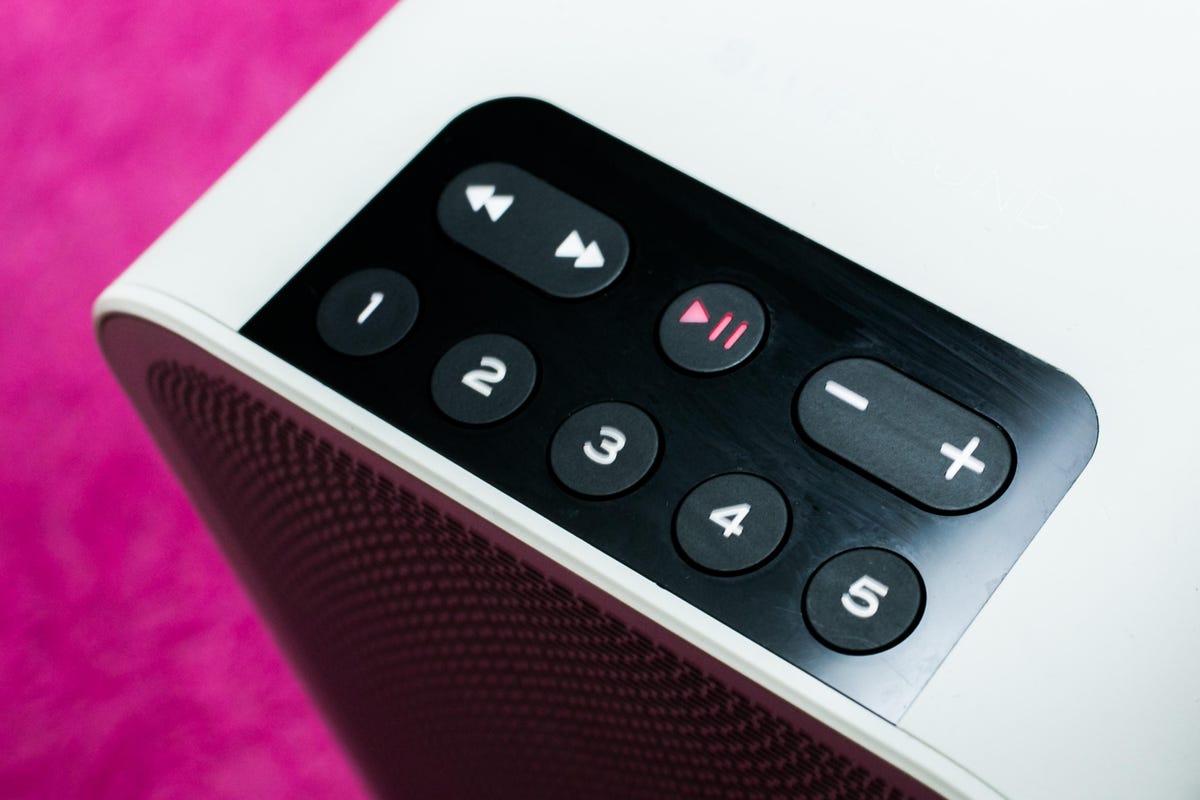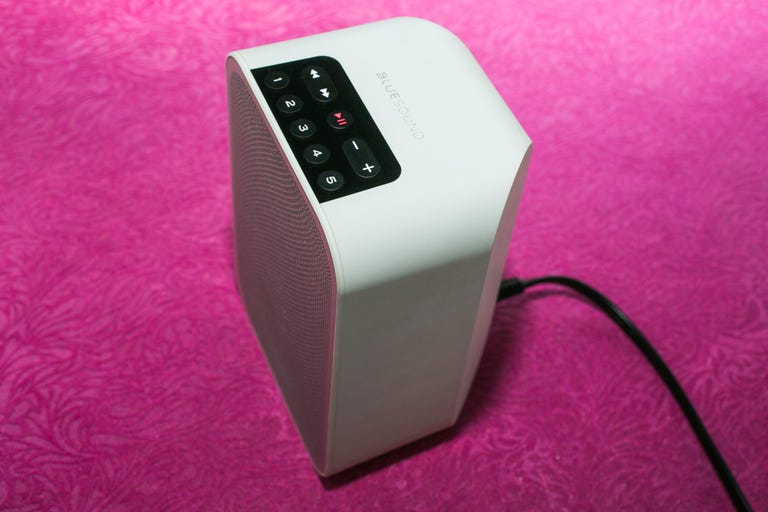 Why You Can Trust CNET
Why You Can Trust CNET Bluesound Pulse Flex review: Flexible in name, flexible in nature
Doing its best in its struggle against the Sonos juggernaut, the Bluesound Pulse Flex is a slice of streaming hi-fi in an affordable package.
If you're into hi-fi, you probably already know the names NAD and PSB (AV electronics and speakers, respectively), but you may not have heard of Bluesound. An offshoot of those two respected marques, it specializes in streaming audio products.
The Good
The Bad
The Bottom Line
At $300 (£299, AU$699) the Bluesound Pulse Flex is least expensive speaker in its lineup, and it offers a lot for the money. The two-way speaker is relatively compact at 4 inches wide by 7.2 inches tall and 5 inches deep. It can either work on its own or be combined with another to create a stereo pair. Connectivity trumps most budget wireless speakers, with Bluetooth , a 3.5mm analog/optical input, Wi-Fi and Ethernet, USB and a headphone output.

Five shortcut buttons, as well as a set of playback and volume controls, sit atop the speaker. While the Flex lacks a power button you can hold down the Play button for 5 seconds to set it in Vacation Mode.
Like the Denon HEOS 1 , the Pulse Flex can also be fitted with an optional portable battery, the $80 BP100. In my tests with the battery, the speaker was able to play CD-quality files at medium volume for the claimed 6 hours. I did find that if you have the unit unplugged , and not in Vacation mode, the player will power down at the same rate even if it isn't playing anything,
The Bluesound app features a color scheme known in the industry as "none more black", and it is relatively easy to use. Streaming services include Spotify Connect, iHeartRadio, Tidal and Qobuz (UK). The one standout that isn't supported is Pandora for whatever reason, though of course you can still stream over Bluetooth. Users can also listen to music in qualities up to 24-bit/192kHz, and the player also has native Roon Ready and MQA support.
I've listened to the Flex as both a background speaker and as a desktop model for some time, and I haven't found a genre it doesn't like. Whether it's streaming the excellent internet radio station Radio Paradise or hi-res rock tracks from my home server, the Flex always sounded balanced and, I want to say, "cheerful." Vocals are crisp, and bass is full if not all that extended.
I compared the speaker against competitive the Play:1 and found the Sonos offered a big sound with Alt-J's "3WW" while also able to pick out details such as the crisp shaker egg and handclaps. In comparison, the Bluesound was more constrained to the physical cabinet, details weren't as present and the result didn't feel as alive. When compared against the Denon HOES 1 the two exhibited very similar sound signatures with this song -- both a little closed in but still very enjoyable. In this three-way battle I'd give the sonic edge to the Sonos -- a larger, louder sound is better for a speaker of this kind.
"Ugly mode"
Depending on where you place the speaker, it's worth experimenting with removing the cover and the foam bung. Sitting on my desk with several feet between the speaker and the wall, it sounded best with both removed, aka Ugly Mode. The sound was richer with a fuller bass, and was less "cupped" sounding in the midrange.
If you put it close to a wall, however, you will want the bung back in, and may also need to use the EQ in the app to lessen any boom. I originally had the port unblocked during one song, but encountered some extreme chuffing or port noise so blocked it up again. The EQ also added a few dB to the Treble control for a little bit of extra zing.
At this level there are plenty of Wi-Fi speakers vying for your attention, and perhaps Bluesound isn't the first you'd think of. But it is a very Flex-ible unit and is capable of very creditable sound. If you had to choose between this and the portable HEOS 1 player it's a very tight race, however the Denon has a slight edge due to its cheaper price and more robust build. If you're an audiophile though, with an interest in hi-res, MQA and Roon, then this is probably the compact speaker to get.


